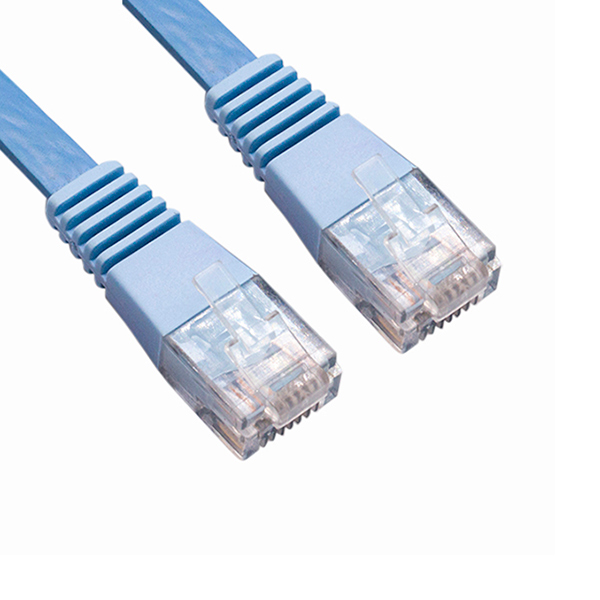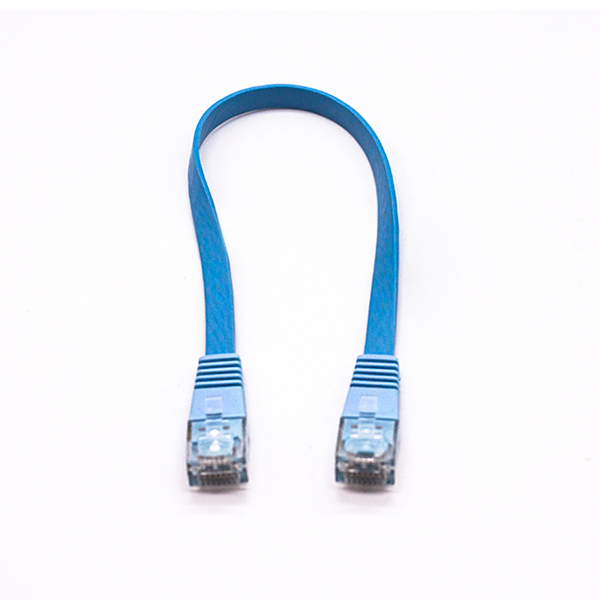In the field of network communication, when it comes to Ethernet cables, it is often mentioned that there are super five types of network cables, six types of network cables, and seven types of network cables. In recent years, Cat8 Class 8 network cables have also been more mentioned. The latest Cat8 Class 8 network cable is the latest generation of double shielded (SFTP) network jumper, which has two signal pairs that can support a bandwidth of 2000MHz and a transmission rate of up to 40Gb/s. However, its maximum transmission distance is only 30m, so it is generally used for connecting servers, switches, distribution frames, and other equipment in short distance data centers. At present, there are five common types of network cables on the market: super five network cables, six network cables, super six network cables, seven network cables, and super seven network cables. Cat8 Category 8 network cables, like Category 7/Ultra Category 7 network cables, are both shielded twisted pair cables and can be applied in data centers, high-speed, and bandwidth intensive areas. Although the transmission distance of Cat8 Category 8 network cables is not as far as that of Category 7/Ultra Category 7 network cables, their speed and frequency are much higher than that of Category 7/Ultra Category 7 network cables. There are significant differences between Cat8 Category 8 network cables and Super Category 5 network cables, as well as Category 6/Super Category 6 network cables, mainly reflected in terms of speed, frequency, transmission distance, and applications
Category 1 cable (CAT1): The highest frequency bandwidth of the cable is 750kHz, used for alarm systems, or only for voice transmission (Category 1 standards are mainly used for telephone cables before the early 1980s), different from data transmission.
CAT2: The highest frequency bandwidth of the cable is 1MHZ, which is used for voice transmission and data transmission with the highest transmission rate of 4Mbps. It is commonly used in old token networks that use the 4MBPS Token passing protocol.
CAT3: refers to the cable specified in ANSI and EIA/TIA568 standards at present. The transmission frequency of this cable is 16MHz, and the maximum transmission rate is 10Mbps (10Mbit/s). It is mainly used in voice, 10Mbit/s Ethernet (10BASE-T) and 4Mbit/s Token Ring. The maximum network segment length is 100m. RJ type connectors are used, which have faded out of the market.
Category 1 cable (CAT1): The highest frequency bandwidth of the cable is 750kHz, used for alarm systems, or only for voice transmission (Category 1 standards are mainly used for telephone cables before the early 1980s), different from data transmission.
CAT2: The highest frequency bandwidth of the cable is 1MHZ, which is used for voice transmission and data transmission with the highest transmission rate of 4Mbps. It is commonly used in old token networks that use the 4MBPS Token passing protocol.
CAT3: refers to the cable specified in ANSI and EIA/TIA568 standards at present. The transmission frequency of this cable is 16MHz, and the maximum transmission rate is 10Mbps (10Mbit/s). It is mainly used in voice, 10Mbit/s Ethernet (10BASE-T) and 4Mbit/s Token Ring. The maximum network segment length is 100m. RJ type connectors are used, which have faded out of the market. Category 4 cable (CAT4): the transmission frequency of this type of cable is 20MHz, which is used for voice transmission and data transmission with the highest transmission rate of 16Mbps (referring to 16Mbit/s Token Ring). It is mainly used for token based LAN and 10BASE-T/100BASE-T. The maximum network segment length is 100m. RJ type connectors are used, which are not widely used
CAT5: This type of cable has increased the winding density of Linear density and is coated with a high-quality insulating material. The maximum frequency bandwidth of the cable is 100MHz, and the maximum transmission rate is 100Mbps. It is used for voice transmission and data transmission with the maximum transmission rate of 100Mbps. It is mainly used for 100BASE-T, and the maximum network segment length is 100m. RJ type connectors are used. This is the most commonly used Ethernet cable inside a twisted pair cable, with different pairs having different pitch lengths. Usually, the twisting period of four pairs of twisted pairs is within 38.1mm, twisted counterclockwise, and the twisting length of one pair is within 12.7mm
CAT5e: CAT5e has low attenuation, low crosstalk, higher attenuation to crosstalk ratio (ACR), structural return loss, and smaller delay error, greatly improving performance. Super Class 5 cables are mainly used for gigabit Ethernet (1000Mbps)
Post time: Jul-29-2023







